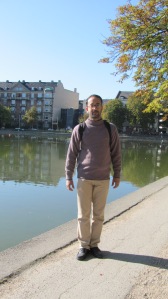String theory yields ultraviolet finite scattering amplitudes in theories of gravity coupled to matter. While the matter content of the theory is dependent on the compactification, the presence of gravity in the spectrum is universal. Hence, this is drastically different from the high energy behavior of conventional quantum field theories of point like excitations because such amplitudes are generically ultraviolet divergent. While in quantum field theory the ultraviolet divergences arise from short distance effects which manifest themselves as divergences arising from high momentum modes in loop integrals in various Feynman diagrams, these divergences are absent in string theory where analogous loop integrals involve an integration over the fundamental domain of the moduli space of two dimensional Riemann surfaces which is the Euclidean worldsheet of the string propagating in the background spacetime. The fundamental domain precisely excludes the regions of moduli space which yield the ultraviolet divergences in quantum field theory. The ultraviolet finiteness of string theory makes it, among other reasons, particularly attractive in the quest for a theory of quantum gravity. On the other hand, there are infrared divergences that arise from the boundaries of moduli space in calculating string amplitudes which reproduce expectations from quantum field theory, which must be the case as string theory must reproduce field theory at large distances. Hence, their cancellation proceeds as in field theory.
However, calculating these loop amplitudes in perturbative string theory is not an entirely trivial exercise. In the absence of Ramond–Ramond backgrounds, tree level amplitudes have been calculated in superstring theory. The one loop amplitudes, which are more complicated, have also been Continue reading →
Tell your friends about CQG+











You must be logged in to post a comment.